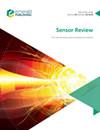Overview of LiDAR point cloud target detection methods based on deep learning
IF 1.4
4区 工程技术
Q3 INSTRUMENTS & INSTRUMENTATION
引用次数: 0
Abstract
Purpose The purpose of this paper is to summarize the existing point cloud target detection algorithms based on deep learning, and provide reference for researchers in related fields. In recent years, with its outstanding performance in target detection of 2D images, deep learning technology has been applied in light detection and ranging (LiDAR) point cloud data to improve the automation and intelligence level of target detection. However, there are still some difficulties and room for improvement in target detection from the 3D point cloud. In this paper, the vehicle LiDAR target detection method is chosen as the research subject. Design/methodology/approach Firstly, the challenges of applying deep learning to point cloud target detection are described; secondly, solutions in relevant research are combed in response to the above challenges. The currently popular target detection methods are classified, among which some are compared with illustrate advantages and disadvantages. Moreover, approaches to improve the accuracy of network target detection are introduced. Findings Finally, this paper also summarizes the shortcomings of existing methods and signals the prospective development trend. Originality/value This paper introduces some existing point cloud target detection methods based on deep learning, which can be applied to a driverless, digital map, traffic monitoring and other fields, and provides a reference for researchers in related fields.基于深度学习的LiDAR点云目标检测方法综述
目的总结现有的基于深度学习的点云目标检测算法,为相关领域的研究人员提供参考。近年来,深度学习技术凭借其在二维图像目标检测方面的突出表现,被应用于光探测与测距(LiDAR)点云数据,以提高目标检测的自动化和智能化水平。然而,基于三维点云的目标检测仍然存在一定的困难和改进空间。本文选择车载激光雷达目标检测方法作为研究课题。首先,介绍了将深度学习应用于点云目标检测的挑战;其次,针对上述挑战,梳理相关研究的解决方案。对目前流行的目标检测方法进行了分类,并对其中的一些方法进行了比较,说明了它们的优缺点。此外,还介绍了提高网络目标检测精度的方法。最后,本文还总结了现有方法的不足,并指出了未来的发展趋势。本文介绍了现有的一些基于深度学习的点云目标检测方法,可应用于无人驾驶、数字地图、交通监控等领域,为相关领域的研究人员提供参考。
本文章由计算机程序翻译,如有差异,请以英文原文为准。
求助全文
约1分钟内获得全文
求助全文
来源期刊

Sensor Review
工程技术-仪器仪表
CiteScore
3.40
自引率
6.20%
发文量
50
审稿时长
3.7 months
期刊介绍:
Sensor Review publishes peer reviewed state-of-the-art articles and specially commissioned technology reviews. Each issue of this multidisciplinary journal includes high quality original content covering all aspects of sensors and their applications, and reflecting the most interesting and strategically important research and development activities from around the world. Because of this, readers can stay at the very forefront of high technology sensor developments.
Emphasis is placed on detailed independent regular and review articles identifying the full range of sensors currently available for specific applications, as well as highlighting those areas of technology showing great potential for the future. The journal encourages authors to consider the practical and social implications of their articles.
All articles undergo a rigorous double-blind peer review process which involves an initial assessment of suitability of an article for the journal followed by sending it to, at least two reviewers in the field if deemed suitable.
Sensor Review’s coverage includes, but is not restricted to:
Mechanical sensors – position, displacement, proximity, velocity, acceleration, vibration, force, torque, pressure, and flow sensors
Electric and magnetic sensors – resistance, inductive, capacitive, piezoelectric, eddy-current, electromagnetic, photoelectric, and thermoelectric sensors
Temperature sensors, infrared sensors, humidity sensors
Optical, electro-optical and fibre-optic sensors and systems, photonic sensors
Biosensors, wearable and implantable sensors and systems, immunosensors
Gas and chemical sensors and systems, polymer sensors
Acoustic and ultrasonic sensors
Haptic sensors and devices
Smart and intelligent sensors and systems
Nanosensors, NEMS, MEMS, and BioMEMS
Quantum sensors
Sensor systems: sensor data fusion, signals, processing and interfacing, signal conditioning.
 求助内容:
求助内容: 应助结果提醒方式:
应助结果提醒方式:


